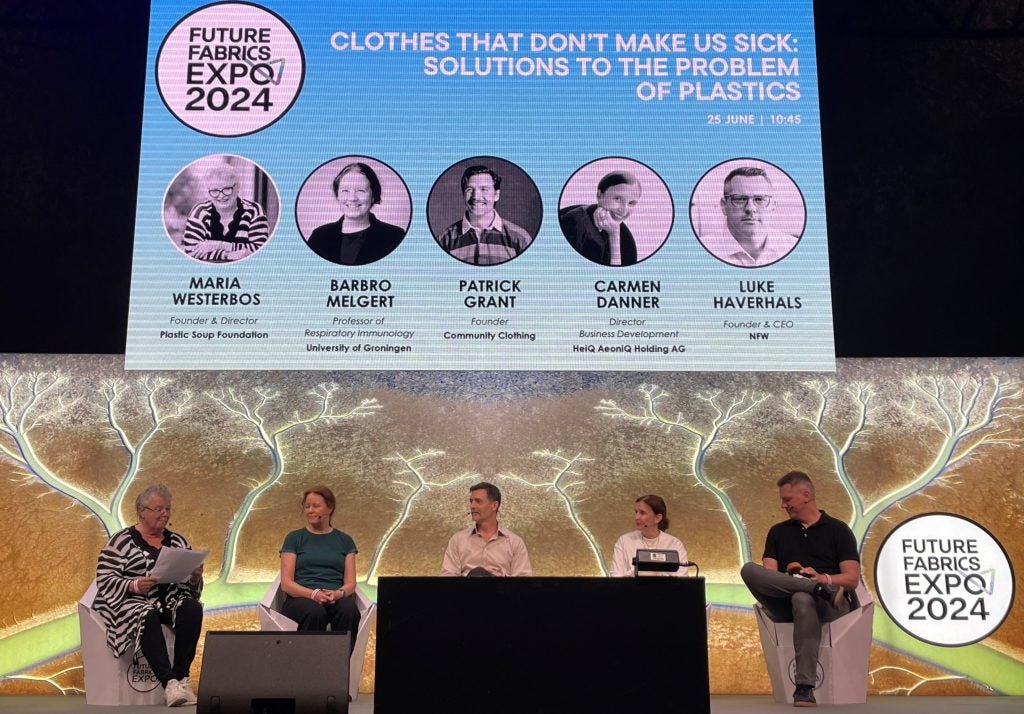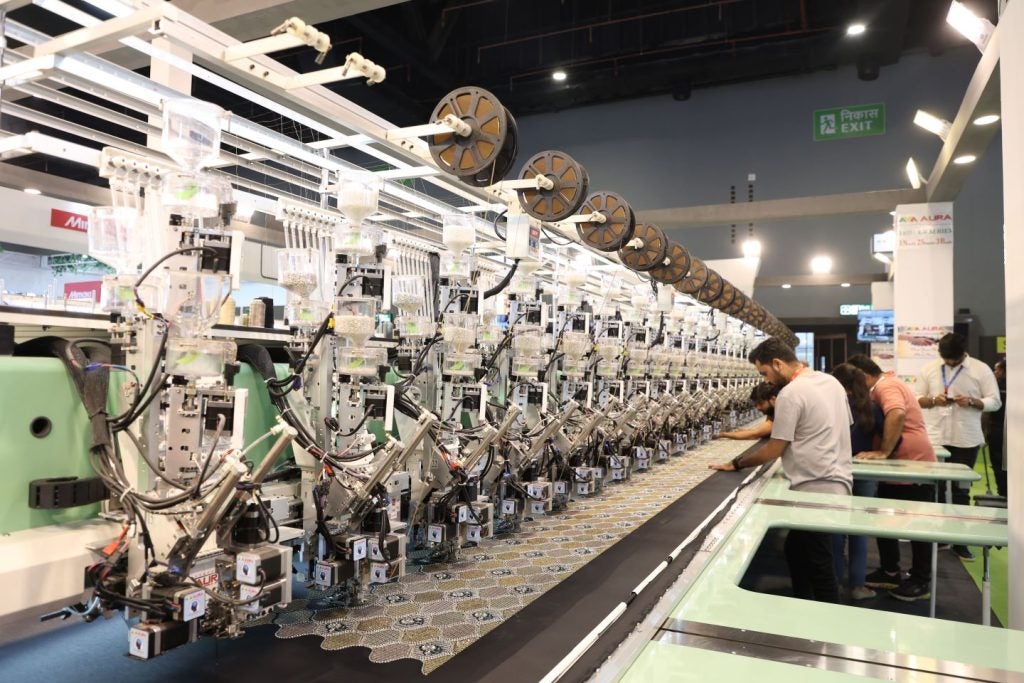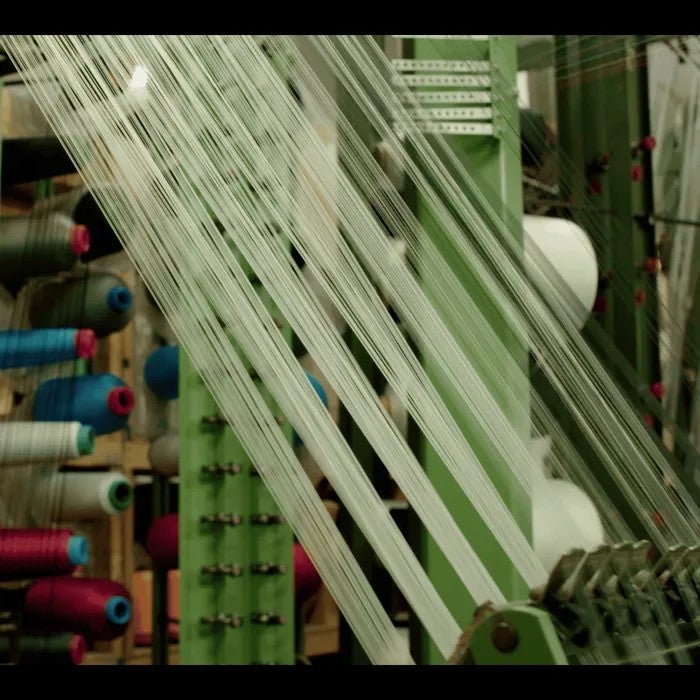A recent panel session at the Future Fabrics Expo in London shed light on the potential health risks associated with synthetic clothing and explored sustainable alternatives that could reshape the industry.
The founder and director of the non-profit marine conservation organisation Plastic Soup Foundation, Maria Westerbos highlighted 69% of fashion is now synthetic, consuming 50bn kilos of oil annually.
The scale of this issue became even more apparent when Westerbos shared her research. By meticulously counting the microfibres released during laundry, she provided evidence of the pollution occurring in consumers' homes. This work, presented at the Plastic Health Summit, she said has been instrumental in raising awareness about the pervasive nature of microplastic pollution in our closets.
The plastic problem in fashion: more than skin-deep
Dr. Barbro Melgert, a professor of respiratory immunology at the University of Groningen and expert in lung exposure studies including those in clothes, brought a crucial health perspective to the discussion. She emphasised a fundamental principle of toxicology: the dose makes the poison. Whilst we don't yet have precise data on how much we breathe in, the potential risks are concerning, she said.
Melgert quoted research which showed that nylon, in particular, can be detrimental to our lungs, especially in terms of repair and growth. It's not the fibre itself that's the primary culprit, but the chemicals associated with it.
As Westerbos pointed out: “These chemicals can clog our veins, they are heavily polluted with synthetic fibres and plastics.”
During the session titled 'Clothes that don't make us sick: Solutions to the problem of plastics,' Melgert warned these synthetic fibres and associated chemicals can “accumulate” in our bodies which could eventually lead to self-poisoning, highlighting the urgent need for alternatives.
How do we fix the issue of synthetic clothing?
The experts agreed that addressing this complex issue requires action on multiple fronts:
Consumer action: All panellists emphasised the importance of reduced consumption with Patrick Grant, the founder of sustainable fashion company Community Clothing, noting that even a 30% reduction in clothing purchases could have a significant impact. The message was clear: consuming less is the ultimate solution.
Government intervention: The panel called for stronger governmental action and regulatory interventions to level the playing field, including policies that require companies to pay for the pollution they cause. The panel cited France's fast fashion law as a step in the right direction, albeit a slow process.
Luke Havervals, the founder and CEO of Natural Fiber Welding (NFW), a circularity platform for plastic-free performance materials, made the point that implementing Extended Producer Responsibility (EPR) could reset the cost structure for clothing manufacturers.
Industry responsibility: Brands and companies were urged to take responsibility for their environmental impact. This includes testing new innovations and materials for toxins, even if they're derived from natural sources.
Collaboration and investment: Carmen Danner, the director of business development at textile innovator Heiq Aeoniq, stressed the need for collaboration between innovators and the industry. Significant financial backing is required not just for upscaling but also for integrating new technologies into the market.
Challenges and realities of synthetic clothing
The panel didn't shy away from acknowledging the significant challenges ahead. Grant pointed out that the current fast fashion business model is unlikely to change until consumer behaviour shifts dramatically. The petrochemical industry's subsidies for energy production also create an uneven playing field for sustainable alternatives.
Grant, bringing both a material science background and practical industry experience to the table, shed light on the economic and historical context of the problem. He explained that “most of our clothes are made from materials and chemicals discovered in the 20th century,” with the primary goal of making clothing more abundant and cheap.
However, what worked in the previous century is proving problematic in this one. Grant's company, Community Clothing, is actively working to remove plastic from their products, a process that comes with significant challenges and costs. Switching to natural materials like rubber and cotton for every component increases expenses considerably.
Grant emphasised that it's not just about developing new technologies; the entire supply chain needs to be “re-engineered” to accommodate these new materials and processes.
“It’s about removing fear in the time of climate change. We ought to have a certain amount of fear because we all have an opportunity to make small changes which have a big impact.”
However, Havervals offered a note of optimism, stating that the shift to plastic-free clothing is “simple and difficult at the same time.”
While the “ubiquitous nature of cellulosic fibres” offers a way forward, he cautioned against simply coating these natural fibres with harmful chemicals, essentially turning them back into plastic.
Melgert added that although we are used to some amount of exposure, anything breathed in large quantities is toxic. She advised companies to keep exposures down in the short term for long-term gains.
Innovative solutions on the horizon
Despite the challenges, the panel highlighted some promising innovations that their companies are working on that they hope will change the textile industry:
Danner presented HEIQ Aeoniq's solution to the nylon problem: a new cellulosic fibre. This innovation boasts several advantages:
- A closed-loop process that uses no toxic chemicals and causes no harm to the environment
- Versatility in feedstock, potentially using agricultural waste or textile waste
- The ability to mimic the feel of synthetic fabrics
- Danner stressed that man-made cellulosic fibres (MMCF) have enormous potential but are currently underutilised, making up only 5.5% of global fibre production.
Meanwhile, Haverval introduced NFW’s approach to creating materials from nutrients:
- It uses abundantly available natural inputs
- Creates families of materials that can mimic plastic in moldability and shape
- Uses existing large-scale inputs
- Offers a platform to compound with nature's fibres and byproducts from the food system.
















